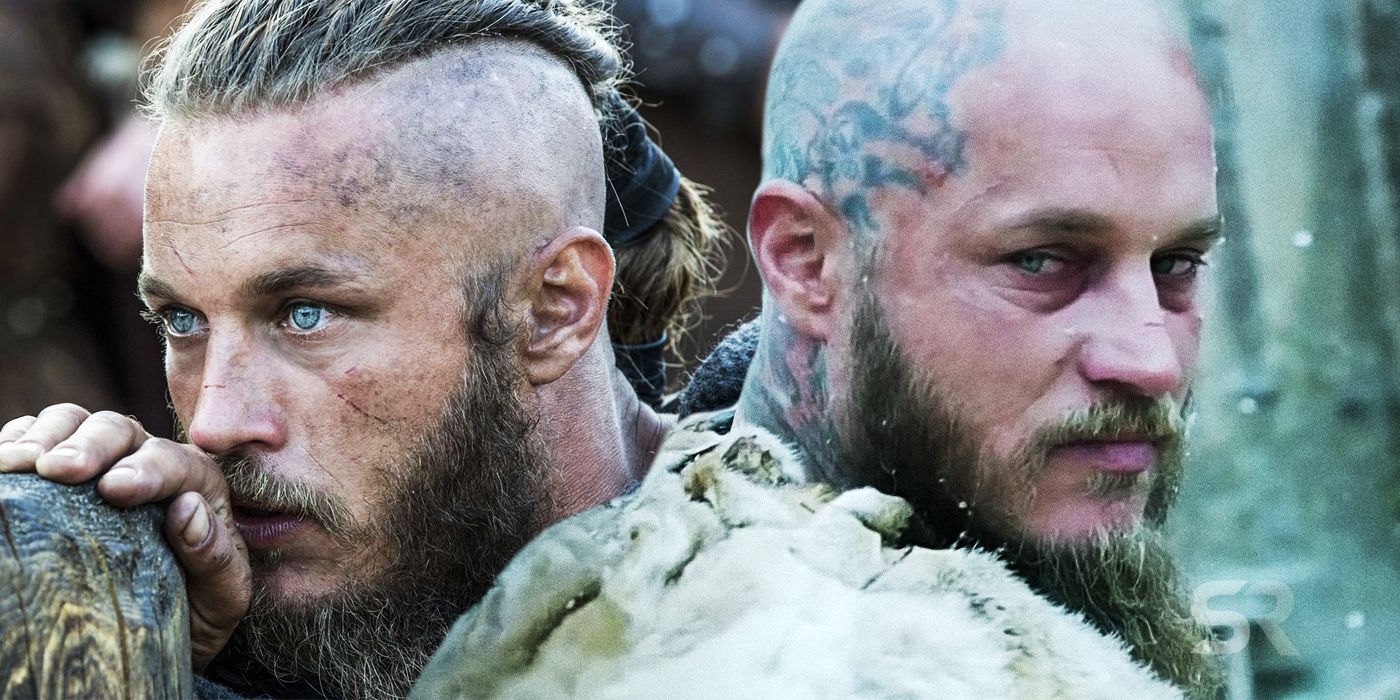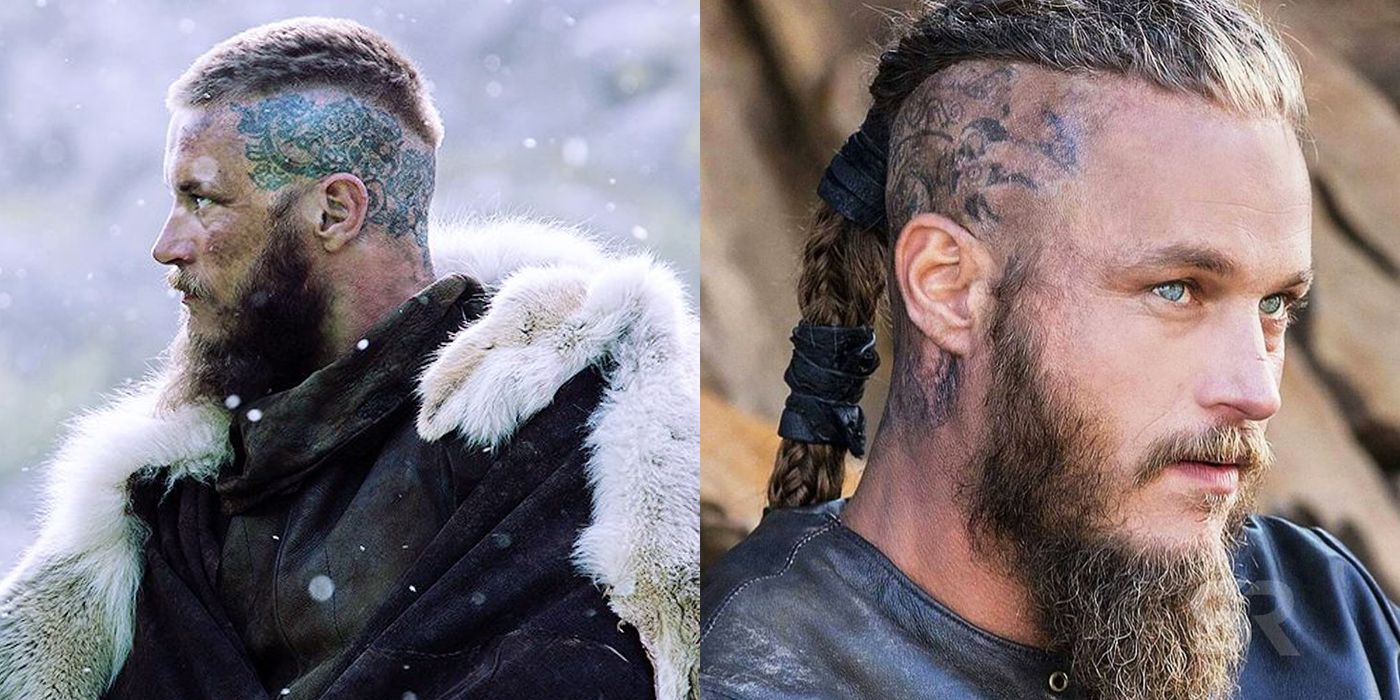Most characters in Vikings, both male and female, have various tattoos, including the series’ former lead, Ragnar Lothbrok – but what’s the meaning behind his tattoos? Created by Michael Hirst, Vikings debuted on History Channel in 2013 and is currently on its sixth and final season. Vikings was originally intended to be a miniseries, but it was quickly renewed for a second season, and so the adventures of Ragnar, Lagertha, Floki, and more continued.
Vikings initially followed the travels of the legendary Ragnar Lothbrok (Travis Fimmel) and his Viking brothers, from the beginning of the Viking Age – marked by the Lindisfarne raid, which was included in season 1 – onward. The series gradually shifted its focus to Ragnar’s sons and their own travels, making them the protagonists. Ragnar met his fate in season 4, but his legacy and presence could be felt in the subsequent seasons, and he came back a couple of times in flashbacks and visions.
Over the course of four seasons, Ragnar evolved a lot, not only in personality, his goals, and motivations, but also physically, and the biggest changes were his tattoos. The creative team behind Vikings has paid a lot of attention to all details – from hairstyles to the fabrics of the clothes – and the evolution of Ragnar’s tattoos has a meaning.
Vikings: The Real Meaning Behind Ragnar’s Tattoos
Ragnar Lothbrok’s head tattoos went from relatively small and simple, to covering almost his entire head (and the nape of his neck). His head tattoo in season 1 was that of a raven, and it was a very simple design. Ragnar was believed to be a descendant of Odin, and in Norse mythology, the Allfather had two ravens that served as his familiars: Huginn and Muninn. The ravens appeared quite often throughout the series, further hinting at Ragnar’s connection with Odin. The raven tattoo, then, was a symbol of Odin’s presence and guidance, as well as his mind and thought.
As seasons passed, Ragnar added more and more details to his head tattoo. On the left side, he had various symbols that represented his warrior spirit and the interdependence of all things in life. He also had a Viking ship head, representing the Vikings’ spirit of adventure, and a Yggdrasil, a mythical tree in Norse cosmology that connects the Nine Worlds (also known as the tree of life). On the right side, the aforementioned raven got lost in a sea of runes, which represented the Norse deities of death, war, and knowledge, as well as Odin (of course). In addition to that, the raven tattoo is believed to be associated with the raven banner of the Viking Great Heathen Army, which was formed by Ragnar’s sons after declaring war on Northumbria following the death of their father.
Vikings has not only offered an exciting look at Viking culture through the travels and stories of Ragnar and company, but it also has a lot of fun little details that represent this culture and expand on the characters’ stories, such as the various tattoos worn by them.


